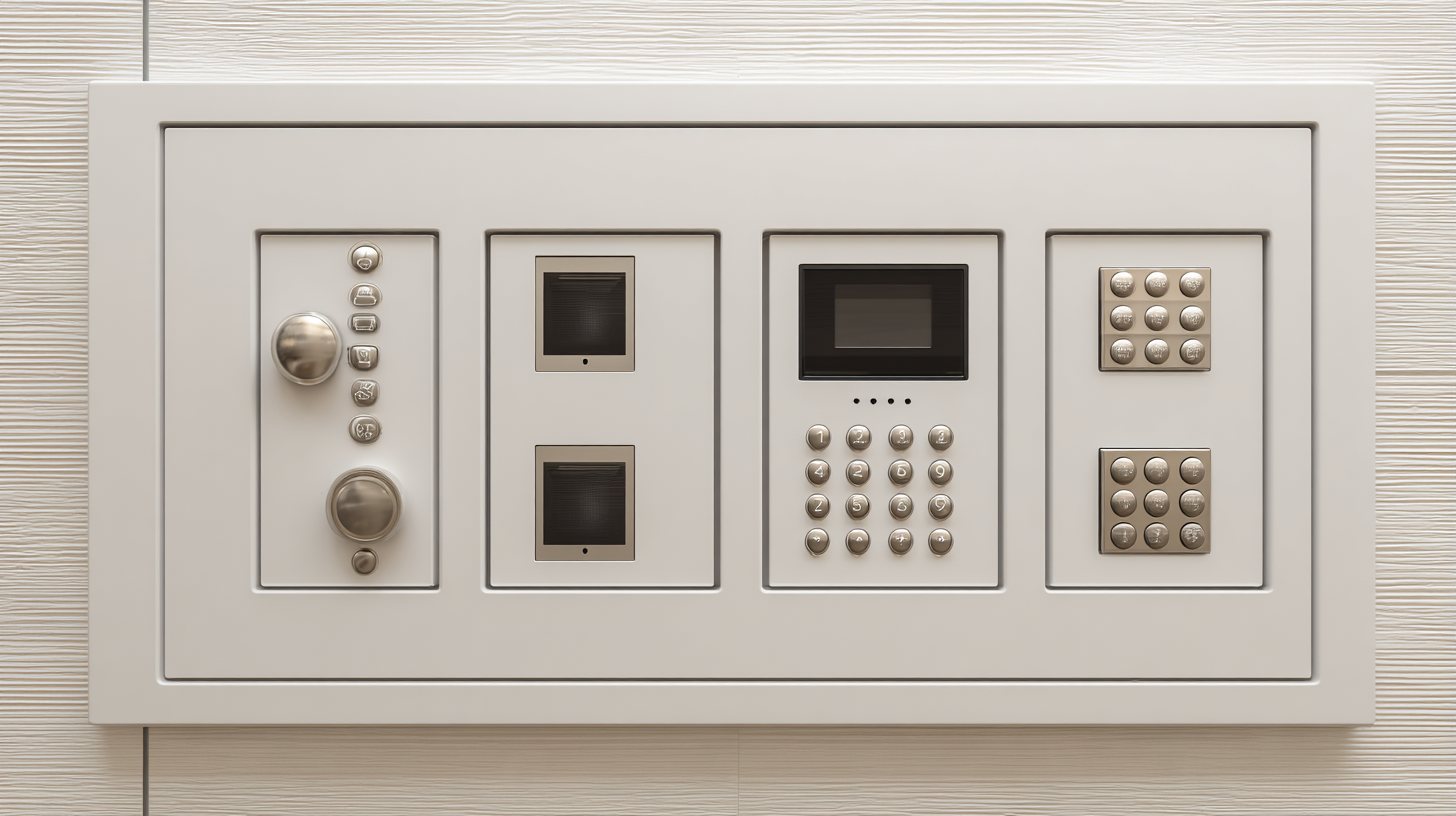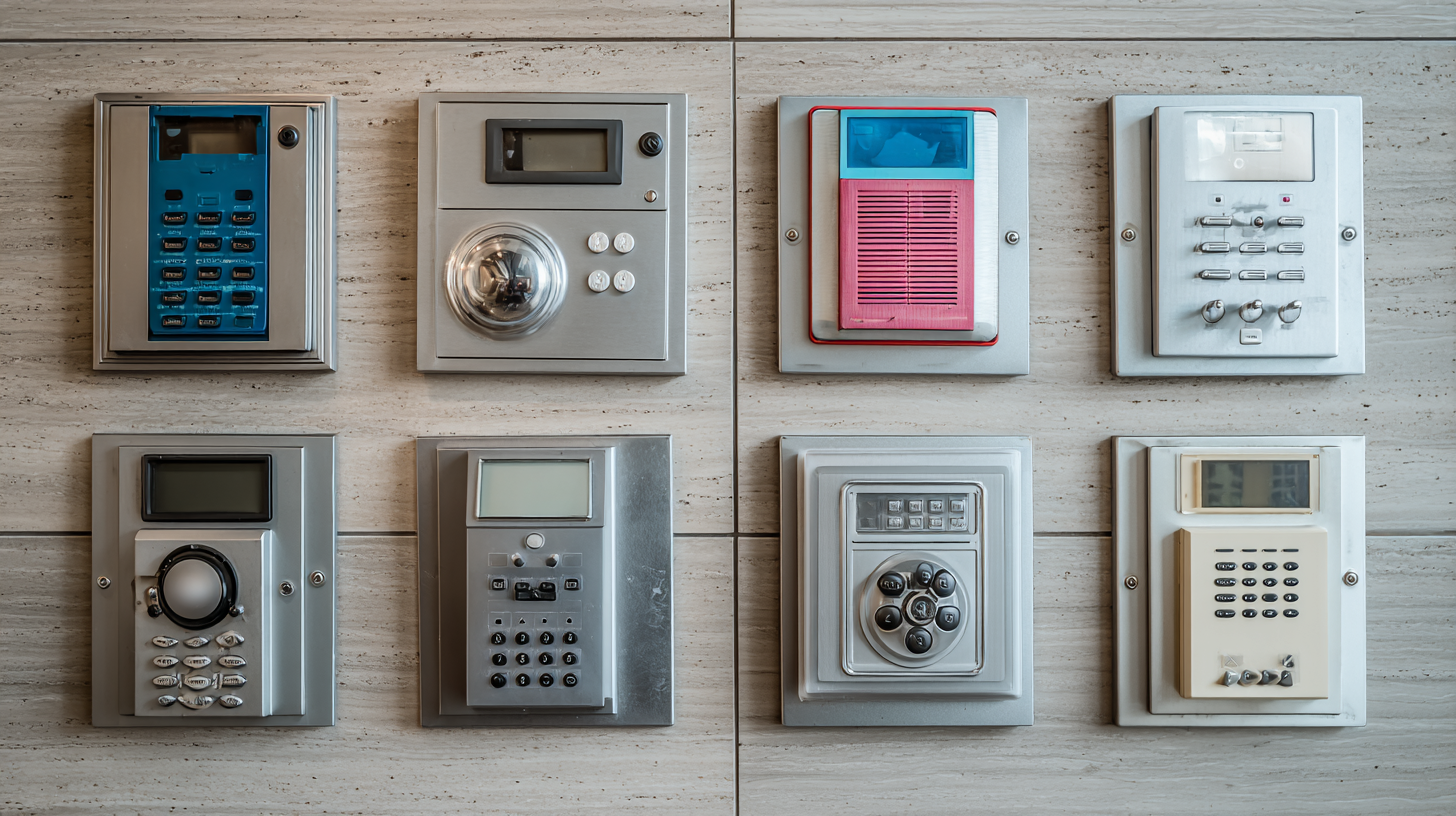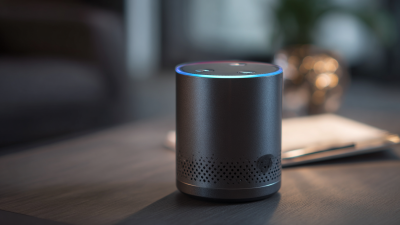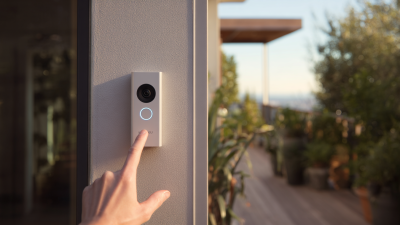How to Choose the Best Intercom System for Your Home
As the demand for enhanced home security and communication solutions continues to rise, selecting the right intercom system for home has become increasingly important. According to a report by MarketsandMarkets, the global intercom system market is anticipated to grow from $2.25 billion in 2020 to $3.37 billion by 2025, reflecting a compound annual growth rate (CAGR) of 8.6%. This growth is driven by the rising need for security systems that integrate video surveillance and smart home technology. Additionally, user-friendly intercom systems are essential for fostering seamless communication between family members and guests.

With a plethora of options available, from wired to wireless systems, understanding the unique features and benefits of each type is crucial for making an informed decision that enhances both safety and convenience in the home.
Understanding Your Intercom Needs: Key Factors to Consider
When choosing the best intercom system for your home, understanding your specific needs is essential. Start by considering the size and layout of your home. If you have a larger property, a wireless intercom system might be more suitable, allowing for coverage across multiple rooms or even outdoor spaces. Conversely, if your home is smaller, a wired option may provide a stable connection without the concern of battery life.
Another critical factor to examine is functionality. Determine if you need a basic audio intercom or if you want a more advanced video system that allows visual communication. Additionally, consider whether you require features like mobile app integration, remote access, or interconnectivity with other smart home devices. These functionalities can enhance your living experience, making it easier to manage communication and security throughout your home. By clearly defining your requirements, you can select an intercom system that not only meets your needs but also adds value to your household.

Comparing Wired vs. Wireless Intercom Systems for Home Use
When selecting an intercom system for your home, one of the fundamental decisions is whether to opt for a wired or wireless solution. Wired intercom systems have long held the advantage of reliability. According to a report by MarketsandMarkets, the wired intercom market is projected to grow at a CAGR of 7.5% from 2021 to 2026, highlighting the demand for robust, secure communication methods. Wired systems typically offer superior audio and video quality, minimizing interference and ensuring seamless communication throughout your property.
On the other hand, wireless intercom systems are gaining traction due to their convenience and ease of installation. Research by Statista indicates that the global wireless intercom market is expected to reach USD 920 million by 2025, driven by advancements in technology and consumer demand for flexibility. Wireless options allow homeowners to place intercom units in any location without the hassle of drilling into walls, making them ideal for modern homes. Furthermore, many wireless systems integrate with smart home technology, enabling users to communicate via smartphones or tablets, thus adding another layer of convenience.
In essence, the choice between wired and wireless intercom systems hinges on your specific needs and preferences. While wired systems provide reliability and higher quality, wireless options offer flexibility and modern features that appeal to many homeowners today.
How to Choose the Best Intercom System for Your Home - Comparing Wired vs. Wireless Intercom Systems for Home Use
| Features | Wired Intercom | Wireless Intercom |
|---|---|---|
| Installation Complexity | Complex, requires professional installation | Simple, can be DIY installed |
| Cost | Higher initial cost | Lower initial cost |
| Audio/Video Quality | Generally higher quality | Quality can vary; interference possible |
| Reliability | Very reliable, less prone to interference | May experience interference; affected by distance |
| Mobility | Fixed locations | Portable; can be used anywhere within range |
| Power Source | Wired, constant power | Battery-powered or plugged in |
Evaluating Sound Quality and Range for Optimal Communication
When selecting the best intercom system for your home, evaluating sound quality and range is crucial for ensuring optimal communication. Sound quality directly impacts how clearly you can hear and understand the conversations taking place. Look for systems that offer high-definition audio or noise-cancellation features, as these will enhance clarity and reduce background noise. Additionally, testing the intercom’s volume settings is essential; a good system should allow for adjustments that suit your environment without compromising sound fidelity.

Range is another vital factor in choosing an intercom system. Consider the layout of your home and the distances between rooms, as a system with limited range may result in dropped connections or inaudible communication. Ideally, you should select an intercom with a range that exceeds the distance between the farthest points in your home. Wireless systems often have the advantage of increased mobility, but it’s important to check any specifications regarding distance restrictions and interference from walls or electronic devices, ensuring reliable communication throughout your living space.
Exploring Features: Video, Smart Home Integration, and More
When selecting the best intercom system for your home, it's essential to consider various features that enhance both convenience and security.
Video functionality is a significant aspect, providing visual verification of visitors, which is instrumental in increasing safety for families. Modern intercom systems equipped with high-definition video capability enable clear communication and interaction.
This has become increasingly important as more households seek ways to integrate advanced technology into daily life, making it easier to connect with others.
Another key consideration is smart home integration. As the rise of Internet of Things (IoT) technology continues, intercom systems that can seamlessly connect with other smart devices become invaluable. Home automation allows for efficient management of devices, whether it's through voice control or mobile apps.
Features that support optimized energy use and enhanced user experiences are increasingly found in the latest systems. The ongoing evolution in AI within smart home frameworks means that intercoms can now offer functionalities that go beyond basic communication, providing users with an intuitive, interconnected living experience.
Budgeting for Your Intercom System: Finding the Right Balance
When selecting an intercom system for your home, budgeting becomes a crucial factor in finding the right balance between functionality and cost. Recent industry reports indicate that the average cost of a residential intercom system ranges from $200 to $1,200, depending on features such as video capabilities, wireless technology, and integration with smart home devices. Investing in a system that meets your specific needs can provide long-term value and convenience, but it's essential to delineate your priorities before diving into the purchasing process.
For instance, if video monitoring and smart home integration are top on your list, consider allocating a larger portion of your budget to a high-quality system that supports these features. Data from the Consumer Electronics Association shows that about 40% of homeowners prefer intercom systems equipped with video capabilities, reflecting a growing trend toward enhanced home security and communication. On the other hand, if you're working with a tighter budget, opting for simpler audio-only intercoms can still offer considerable benefits without straining your finances. Balancing your immediate requirements against future needs will help ensure that you don’t overspend while still making a wise investment in your home’s connectivity.
Home Intercom System Budgeting Overview
Related Posts
-

Solutions for Enhancing Home Communication with Wireless Intercom Systems
-

10 Key Reasons the Best Video Intercom System Enhances Home Security Efficiency
-

Understanding the Features and Benefits of Wifi Intercom Systems
-

10 Digital Tips for Choosing the Best Wifi Intercom for Your Business Needs
-

Exploring Unique Alternatives to VoIP Telephone Systems for Modern Businesses
-

7 Best Intercom Systems for Apartments in 2023 to Enhance Your Home Security